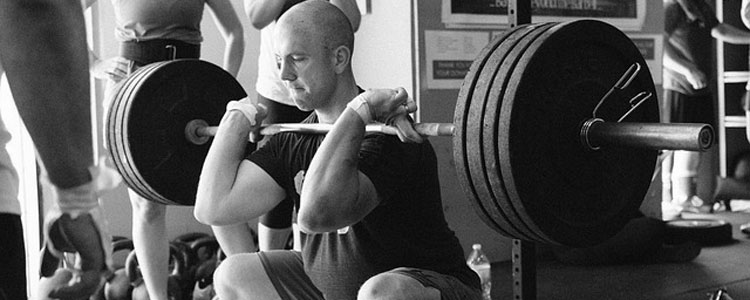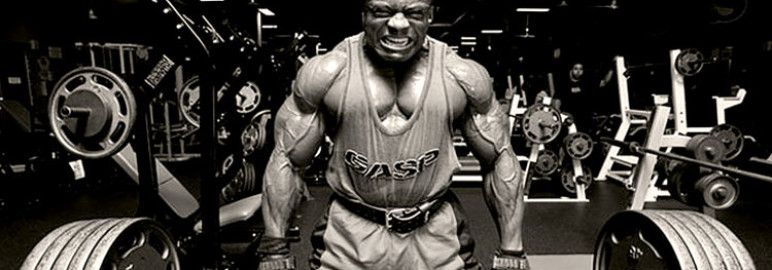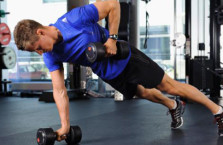If there is any statement to be loathed in the fitness world it’s: Always Avoid This Movement.
The problem with listening to anyone who tells you you should always avoid a movement: failing to acknowledge the principle of individual differences. Since our anatomy and goals differ, we are naturally going to gravitate more toward some exercises and away from others. Since we’re all different, the exercises we employ will be unique compared to those of the next lifter.
You Should Definitely Avoid this Movement

If we listened to all of the advice out there to avoid movements, there would be no squatting, deadlifting, hip thrusting, bench pressing, military pressing, Olympic lifting, leg extensions, leg curls, leg press, bent over rows, barbell curls, upright rows, behind neck presses and pulldowns, hanging leg raises, pec deck, smith machine exercises, hip abductor/adductor machine exercises, bench dips, jump rope, plyos, crunches, sit ups, elliptical machine, side bends, back extensions, dips, stiff leg deadlift, heavy lifting, seated ab twist machine, shoulder press machine, machine calf raises, shrugs, twisting sit ups, running, box jumps, kipping pull-ups, and ballistic stretching.
Now, I’m sure you agree with some of these, but I’m also sure that there are exercises that you like that you found mentioned. And that’s the point! We are all unique. If you know enough about anatomy, physiology, and strength training, you could make a case for why every exercise in the book should be avoided. Conversely, you could also make a case for why every exercise in the book should be performed.
The New Rules of Strength Training

• An exercise is judged by how it is supposed to be performed, not by how individuals screw it up.
• If you think lifting weights is dangerous, try being weak. Being weak is dangerous.
• There are no contraindicated exercises, just contraindicated individuals. Learn how your body works and master its mechanics.
• If you can’t perform an exercise properly, don’t do it. If an exercise consistently causes pain, don’t do it. If an exercise consistently injures you, don’t do it.
• Earn the right to perform an exercise. Correct any dysfunction and become qualified with bodyweight before loading up a movement pattern.
• Exercises performed poorly are dangerous, while exercises performed well are beneficial. If you use poor form, you’ll hurt yourself. It’s only a matter of time.
• If you display optimal levels of joint mobility, stability, and motor control, you’ll distribute forces much better and be able to tolerate more volume, intensity, and frequency.
• Structural balance is critical. You must strengthen joints in opposing manners to ensure that posture isn’t altered. If your posture erodes due to strength training, it means that you’re a shitty program designer.
• Body tissues adjust to become stronger to resist loading. The body is a living organism that adapts to imposed demands.
• Your training will be based on your needs, your goals, and your liking. Different goals require different training methods. The loftier your goals, the more risk entailed.
• There are two types of stress: eustress and distress. Keep yourself in eustress and you’ll be okay.
• If you believe an exercise will hurt you, it probably will.
• Injuries in the weight room have more to do with poor form and poor programming than the exercise itself. Exercises are tools. You are the carpenter. A good carpenter never blames his tools.
• Rather than drift along with popular trends, it’s more fruitful to learn how the body works, which will allow you to understand the pros and cons of every exercise and make educated decisions in your programming.
The TakeAway
At the end of the day, how you train is your call. Whether you play it safe or roll the dice, at least you’re not sitting on the couch. Pain and injuries have a way of teaching you proper form and programming, and having a large arsenal of exercises is important to prevent boredom and habituation and spark further adaptation. In short, keep learnin’ and keep liftin’!
Articles advising lifters to avoid exercises will keep resurfacing over the years. Rather than just accepting the authors’ advice at face value, I recommend learning the basics of biomechanics and experimenting with exercise variations prior to making your decision to abstain from a particular exercise.
For the original article visit here



![Lose Weight With These Health Care Tools! [VIDEO]](http://FitPhreak.com/wp-content/uploads/2016/03/Tech_Gadget_You_Can_Use_To_Get_Fit-1-223x145.jpg)







![Go Vegan The Right Way [VIDEO]](http://FitPhreak.com/wp-content/uploads/2016/05/Vegan-223x145.jpg)

